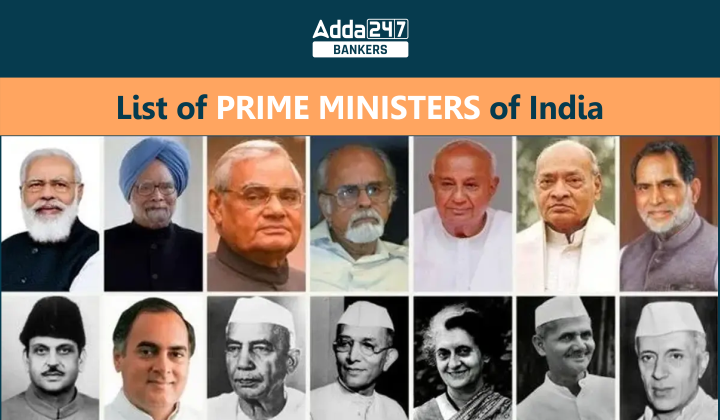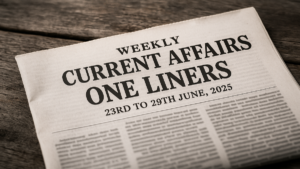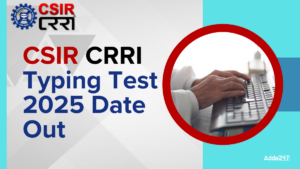Prime Minister of India
In India’s political framework, the Prime Minister assumes a pivotal role as the head of the cabinet and leader of the ministers. As per Article 75 of the Indian Constitution, the President of India appoints the Prime Minister, and the powers and authority of the Prime Minister, as laid out in Article 78, are constitutionally defined. The Prime Minister holds the foremost executive powers in the government, while the President primarily serves as a symbolic head of the state. This includes the Prime Minister’s responsibility for setting parliamentary meeting schedules and organizing agendas for Parliament sessions. Moreover, the Prime Minister holds the decisive authority regarding the proroguing or dissolution of the house. Additionally, the Prime Minister serves as the government’s chief spokesperson, conveying and announcing key government policies and addressing inquiries related to these policies. Here in this article we have given the List of Prime Ministers of India From1947-2023.
List of Prime Minister of India: Overview
The Prime Minister of India is the head of the Government of India. Some important facts related to the Prime Minister Of India are given below:
- Jawaharlal Nehru was the first Prime minister of India elected in 1947. He also named as India’s longest-serving prime minister.
- Indira Gandhi was the first Woman Prime minister of India elected in 1966.
- Rajiv Gandhi was sworn in as India’s youngest Prime minister of India after the demise of his mother in 1984.
- Manmohan Singh is the first Sikh Prime minister of India elected in 2004.
- Narendra Damodardas Modi is the current Prime minister of India and 14th Prime Minister of India.
Till now, the people of India have elected 15 Prime Ministers in India. Here, in this article we will discuss the list of Prime Minister of India (from 1947- present):
List of PM of India (From 1947- 2023)
| S. No. | Name | Term Of Office |
| 1. | JAWAHAR LAL NEHRU | 1947-1964 |
| 2. | LAL BAHADUR SHASTRI | 1964-1966 |
| 3. | INDIRA GANDHI | 1966-1977 |
| 4. | MORARJI DESAI | 1977-1979 |
| 5. | CHARAN SINGH | 1979-1980 |
| 6. | INDIRA GANDHI | 1980-1984 |
| 7. | RAJIV GANDHI | 1984-1989 |
| 8. | VISHWANATH PRATAP SINGH | 1989-1990 |
| 9. | CHANDRA SHEKHAR | 1990-1991 |
| 10. | P.V. NARASIMHA RAO | 1991-1996 |
| 11. | ATAL BIHARI VAJPAYEE | 1996 ( FOR 13 DAYS) |
| 12. | H.D DEVGOWDA | 1996-1997 |
| 13. | I.K. GUJRAL | 1997-1998 |
| 14. | ATAL BIHARI VAJPAYEE | 1998-1999 & 1999-2004 |
| 15. | DR. MANMOHAN SINGH | 2004-2009 & 2009-2014 |
| 16. | NARENDRA MODI | 2014-2019 & 2019- PRESENT |
List of Prime Ministers of India: In Brief Information
Prime Minister of India: Narendra Damodardas Modi (2014-Incumbent)
He became the 15th Prime Minister of India as a member of BJP who was re-elected in the year 2019 and now is the Prime Minister of India. He abolished the Planning Commission and made NITI Aayog for the short and long-term policy planning of India. Earlier, he was the Chief Minister of Gujarat.
Prime Minister of India: Manmohan Singh (2004-2014)
In the year 2004, Mr. Manmohan Singh became the 13th PM of India who was the first Sikh PM of Independent India. He was re-elected in the 2009 election till the 2014 general election. He was also the first PM after Jawarharlal Nehru in INC who completed his full five years tenure.
Prime Minister of India: Atal Bihari Vajpayee (1996, 1998-99, 1999-2004)
In 1996, Atal Bihari Vajpayee became the PM till 2004 and was re-elected twice in between. During his tenure, he carried out the Pokhran-2 nuclear test in 1998.
Prime Minister of India: Inder Kumar Gujral (1997-1998)
He was elected as the 12th prime minister of India, I K Gujral was a participant of the Quit India Movement under Gandhi Ji leadership. He was also a Rajya Sabha member as well as a Lok Sabha member.
Prime Minister of India: HD Deve Gowda (1996-1997)
Haradanahalli Doddegowda Deve Gowda was elected as the 11th Indian PM and he had also held the office of the Karnataka chief minister from 1994 to 1996.
Prime Minister of India: PV Narasimha Rao (1991-1996)
He was elected as the 9th PM of India in 1991. He was first belonging to the southern part of the region and remained in office till 1996.
Prime Minister of India: Chandra Shekhar (1990-1991)
He was elected as PM in the year 1990 but remained in the office for less than a year.
Prime Minister of India: VP Singh (1989-1990)
Vishwanath Pratap Singh was the seventh prime minister of India. He was elected as the PM in the year 1989 but was in the office for less than a year.
Prime Minister of India: Rajiv Gandhi (1984-89)
After the death of Indira Gandhi in 1984, her son Rajiv Gandhi became the Prime Minister of India. While Campaigning for the 1991 election, he was assassinated by a suicide bomber of LTTE.
Prime Minister of India: Chaudhary Charan Singh (1979-80)
Chaudhary Charan Singh was elected as the fifth prime minister of India. He was born in a peasant family in Uttar Pradesh, Charan Singh was the champion of peasant’s rights.
Prime Minister of India: Morarji Desai (1977-79)
In the 1977 general election, Morarji Desai became the PM who was from the Janata party but had to leave in 1979. He became the first Non-Congress Prime Minister of India in the year 1997.
First Female Prime Minister of India: Indira Gandhi (1966-1977, 1980-1984)
Indira Gandhi was elected as the 3rd Prime Minister of India and the 1st Lady Prime Minister of India. She was re-elected in the 1971 elections. In which, She led the fight with western Pakistan and helped to make the independent nation that is Bangladesh. In 1977, Morarji Desai became the PM but in the 1980 elections she became prime minister of India again but she was assassinated in 1984 by her guards.
Prime Minister of India: Gulzarilal Nanda (1964, 1966)
Gulzarilal Nanda took office in 1966 following the death of Lal Bahadur Shastri for 13 days as the acting prime minister of India. His earlier 13 days stint as the second prime minister of India followed the death of prime minister Jawaharlal Nehru in 1964.
Second Prime Minister of India: Lal Bahadur Shastri (1964-1966)
In 1964, he took the position of prime Minister of India. He led the country during the India-Pakistan war in 1965 which was formally ended with the Tashkent Agreement in 1966. After this, he died in Tashkent because of a cardiac attack.
First Prime Minister of India: Jawaharlal Nehru (1947-1964)
He was the first prime minister of independent India who had the longest time period (1947-1964) before he died. He was an eminent leader in the Indian Independence Movement and became prime minister after independence until he died in 1964.
How Prime Minister is Elected in India?
1) The candidate must be a citizen of India.
2) The candidate should either be a member of the Lok Sabha (Lower House or House of the people) or the Rajya Sabha (Upper House).
3) If he/she is a member of the Lok Sabha then he/she should be at least 25 years old but If the candidate is a Rajya Sabha member, then he or she must be 30 years of age.
4) The President holds the power to appoint a person as the Prime Minister who is a member of neither of the Parliamentary House.
5) It is required that the candidate must be a member of the political party or coalition which has garnered majority votes in the Lok Sabha.
6) The selected candidate must not hold any office of profit under the Indian government or government of any other state.
7) It is of utmost importance that the candidate should not hold any criminal charges proved in any court of justice in India.
What is the Role of Prime Minister?
1) It is the Prime Minister who advices the President of India to appoint the council of ministers.
2) The tenure of the Prime Minister is initially for a period of five years but the candidate can stay in the power as long as he or she holds majority support in the Lok Sabha.
3) It is the Prime Minister who conducts and presides over the Cabinet meetings and its proceedings.
4) It is the responsibility of the Prime Minister to distributes various portfolios among the ministers some of which include defence, home affairs, finance, railways, agriculture, law, and justice.
5) The Prime Minister also has the power to change the departments allotted to the ministers at any time.
6) The Prime Minister is the real head of the nation and takes all the necessary steps in all sectors of the nation.





 Weekly Current Affairs One Liners 23rd t...
Weekly Current Affairs One Liners 23rd t...
 CSIR CRRI Typing Test 2025 Date for JSA ...
CSIR CRRI Typing Test 2025 Date for JSA ...
 Can Final Year Students Apply for SBI PO...
Can Final Year Students Apply for SBI PO...


